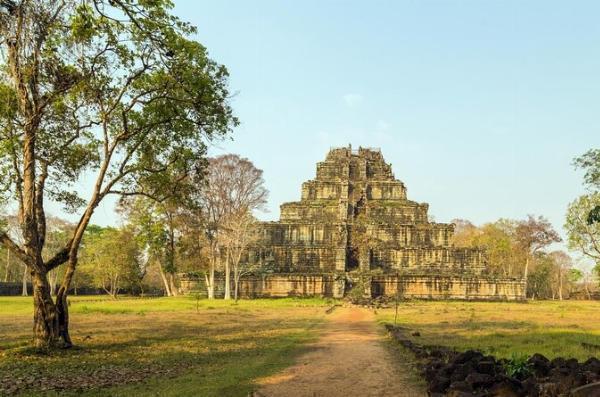9 Historical Sites to Explore on Private Siem Reap Tours

Strong 8k brings an ultra-HD IPTV experience to your living room and your pocket.
Siem Reap, located in northwestern Cambodia, is a treasure trove of ancient history and culture. This vibrant city serves as the gateway to the Angkor region, home to some of the most magnificent archaeological sites in the world. Private Siem Reap tours offer a personalized and intimate way to explore these historical marvels. Here are nine must-visit historical sites that you can explore on your private Siem Reap tour.
1. Angkor Wat
Angkor Wat is the crown jewel of Cambodia and the largest religious monument in the world. Built in the early 12th century by King Suryavarman II, this UNESCO World Heritage Site was originally dedicated to the Hindu god Vishnu before gradually transforming into a Buddhist temple. The grandeur of Angkor Wat is best appreciated during a private tour, which allows you to explore its intricacies at your own pace. The temple's central tower rises 65 meters above the ground, surrounded by four smaller towers and a series of galleries adorned with intricate bas-reliefs depicting Hindu mythology and historical events. Witnessing the sunrise over Angkor Wat is an unforgettable experience, highlighting the temple’s majestic silhouette against the dawn sky.
2. Bayon Temple
Nestled in the heart of Angkor Thom, the last capital city of the Khmer Empire, Bayon Temple is renowned for its enigmatic smiling stone faces. Built in the late 12th century by King Jayavarman VII, Bayon serves as a striking example of Khmer architecture. The temple features 54 towers, each adorned with four faces, thought to represent either King Jayavarman VII himself or the Bodhisattva of compassion, Avalokiteshvara. Private Siem Reap tours can provide insightful commentary on the temple’s symbolic carvings and its historical significance. The serene and somewhat mysterious ambiance of Bayon, coupled with its architectural brilliance, makes it a must-visit site.
3. Ta Prohm
Famed for its appearance in the film "Lara Croft: Tomb Raider," Ta Prohm is one of Angkor’s most atmospheric temples. Unlike many other temples, Ta Prohm has been left largely in the state it was found, with massive trees growing out of the ruins and roots encasing the stone structures. This unique integration of nature and architecture offers a glimpse into the power of the jungle and the passage of time. Built in the late 12th and early 13th centuries as a Buddhist monastery and university by King Jayavarman VII, Ta Prohm is best explored on a private tour, where you can wander through its labyrinthine corridors and courtyards without the rush of a large group.
4. Banteay Srei
Often referred to as the “Jewel of Khmer Art,” Banteay Srei is a 10th-century temple dedicated to the Hindu god Shiva. Located about 25 kilometers from the main Angkor complex, Banteay Srei is known for its miniature scale and elaborate carvings. The pink sandstone used in its construction allows for intricate detailing, which is remarkably well-preserved. The temple’s exquisite lintels and pediments depict scenes from Hindu mythology with extraordinary precision. Private Siem Reap tours to Banteay Srei provide an opportunity to appreciate the temple’s artistry without the distractions of larger crowds, making the journey well worth the effort.
5. Angkor Thom
Angkor Thom, translating to “Great City,” was the last capital of the Khmer Empire, established in the late 12th century by King Jayavarman VII. Enclosed by a formidable wall and a wide moat, Angkor Thom covers an area of nine square kilometers and contains several significant temples and structures. The city’s main entrance gates are topped with giant faces and flanked by statues depicting the Churning of the Ocean of Milk, a famous Hindu myth. A private tour of Angkor Thom allows for an in-depth exploration of its many highlights, including the Bayon, Baphuon, Phimeanakas, and the Terrace of the Elephants.
6. Preah Khan
Preah Khan, meaning “Sacred Sword,” was built in the late 12th century by King Jayavarman VII to honor his father. This sprawling temple complex once served as a university and a city in itself, housing over 100,000 officials and servants. Preah Khan is unique for its blend of Buddhist and Hindu elements, featuring both deities in its carvings and structures. The temple’s layout is designed in a cruciform pattern, with long corridors and intricate carvings that create a sense of endless exploration. Private Siem Reap tours to Preah Khan offer a more tranquil experience, as this site is less crowded than other major temples.
7. Phnom Bakheng
Phnom Bakheng, a hilltop temple dedicated to the Hindu god Shiva, predates Angkor Wat and offers one of the best panoramic views of the Angkor Archaeological Park. Constructed in the late 9th to early 10th century by King Yasovarman I, this temple-mountain symbolizes Mount Meru, the center of the universe in Hindu and Buddhist cosmology. Climbing Phnom Bakheng at sunset is a popular activity, as it provides breathtaking views of Angkor Wat and the surrounding forest. A private tour ensures a more comfortable and informative experience, allowing you to appreciate both the climb and the view with personalized insights.
8. Beng Mealea
Located about 40 kilometers east of the main Angkor complex, Beng Mealea is a hidden gem that offers an adventurous and less crowded alternative to the more famous temples. Built in the early 12th century, the temple is largely unrestored, with sprawling vegetation enveloping its ruins. This makes for a truly immersive and atmospheric exploration, reminiscent of the early days of Angkor’s rediscovery. The temple’s layout is similar to Angkor Wat, with a central tower and extensive galleries, but its untamed state gives it a unique charm. Private Siem Reap tours to Beng Mealea provide the opportunity to explore this remote site with expert guidance, ensuring both safety and a deeper understanding of its history.
9. Roluos Group
The Roluos Group, located about 13 kilometers southeast of Siem Reap, consists of three major temples: Bakong, Preah Ko, and Lolei. These temples are among the earliest large-scale stone temples built by the Khmer Empire, dating back to the late 9th century during the reign of King Indravarman I. Bakong, the most prominent of the three, is a pyramid-shaped temple-mountain that served as the center of the ancient city of Hariharalaya. Preah Ko, meaning “Sacred Bull,” is named after the statues of Nandi, Shiva’s mount, which stand in front of its towers. Lolei, originally an island temple, now stands in a rice field and features intricate carvings and inscriptions. A private tour of the Roluos Group offers a journey back in time to the early days of Khmer architecture and provides a broader understanding of the development of the Angkor civilization.
Why Choose Private Siem Reap Tours?
Opting for a private Siem Reap tour provides several advantages that enhance your exploration of these historical sites:
Personalized Itinerary: Private tours allow you to customize your itinerary based on your interests and pace, ensuring a more enjoyable and meaningful experience.
Expert Guides: Knowledgeable guides provide detailed historical context and interesting anecdotes, enriching your understanding of each site.
Flexible Scheduling: You can avoid the crowds and visit popular sites during off-peak hours, making your tour more comfortable and less rushed.
Exclusive Access: Some private tours offer exclusive access to certain areas of the temples, allowing for a more intimate experience.
Comfort and Convenience: Private transportation ensures a comfortable journey between sites, with amenities such as air-conditioning and refreshments.
Conclusion
Siem Reap is a destination that captures the imagination with its rich history and awe-inspiring temples. Exploring these historical sites on a private Siem Reap tour offers an unparalleled experience, combining personalized service, expert knowledge, and the flexibility to fully appreciate the wonders of the Angkor region. From the iconic Angkor Wat to the atmospheric Ta Prohm and the intricate Banteay Srei, each site tells a story of a bygone era and showcases the remarkable achievements of the Khmer Empire. Whether you are a history enthusiast, an architecture lover, or simply seeking a unique travel experience, Siem Reap’s historical sites promise a journey of discovery and wonder.
Note: IndiBlogHub features both user-submitted and editorial content. We do not verify third-party contributions. Read our Disclaimer and Privacy Policyfor details.


